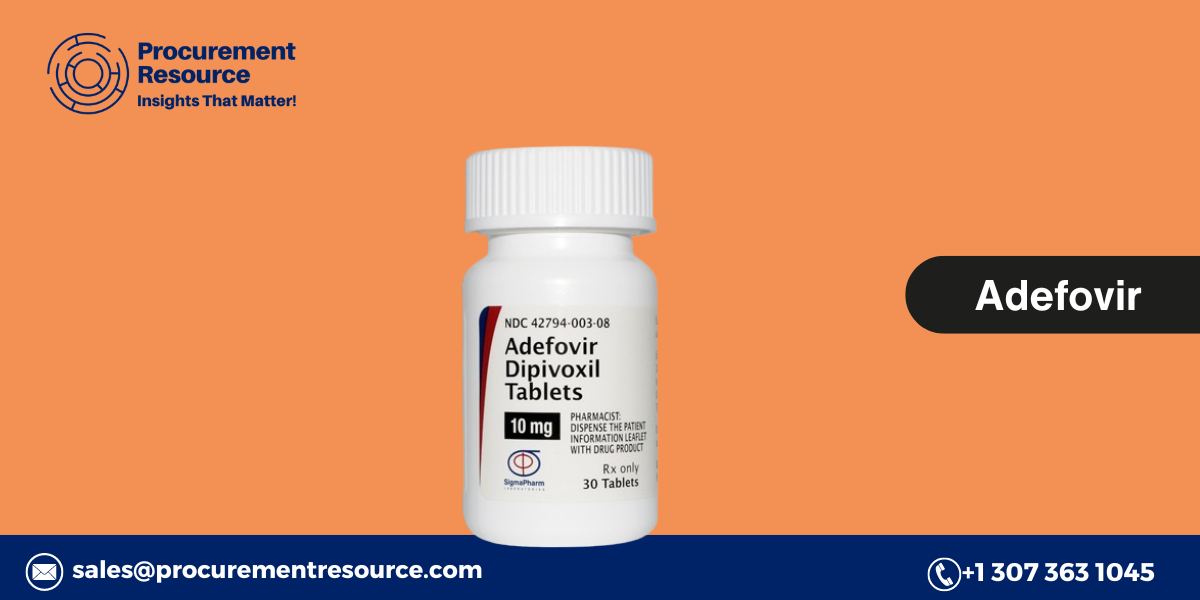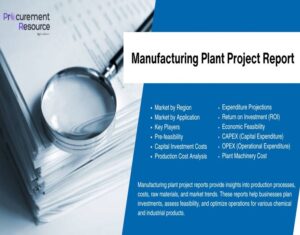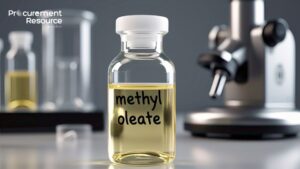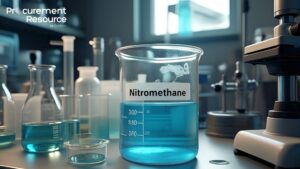
Adefovir Production Process
Adefovir is an antiviral drug used primarily to treat chronic hepatitis B infections. It belongs to the class of nucleotide analog reverse transcriptase inhibitors (NRTIs). Due to its critical role in treating chronic viral infections, understanding the production cost of Adefovir is essential for pharmaceutical manufacturers, healthcare systems, and regulatory authorities. The cost structure of producing Adefovir includes various factors, such as raw materials, chemical synthesis processes, labor, equipment, and compliance with regulatory standards.
In this article, we will explore the comprehensive cost components involved in Adefovir production process, offering insights into how manufacturers can optimize processes to remain competitive while ensuring quality.
1. Overview of Adefovir
1.1 Chemical Structure and Properties
Adefovir is a nucleotide analog of adenosine monophosphate and is chemically known as Adefovir dipivoxil (the prodrug form). It is metabolized in the body to its active form, Adefovir diphosphate, which inhibits viral replication by targeting the hepatitis B virus (HBV) polymerase. The chemical structure of Adefovir contains several complex molecular features, which influence its synthesis process and associated production costs. Request For Free Sample: https://www.procurementresource.com/production-cost-report-store/adefovir/request-sample1.2 Medical Applications
Adefovir dipivoxil has primarily been used for treating chronic hepatitis B infections, particularly in patients who have developed resistance to other treatments like lamivudine. It is also used off-label for treating certain cases of HIV, although newer antiretroviral drugs have largely replaced it for this indication. Given its significant role in treating chronic liver disease, particularly in areas where hepatitis B is endemic, efficient and cost-effective production of Adefovir is critical for ensuring accessibility and affordability of the drug.2. Production Process of Adefovir
The production of Adefovir involves a multi-step chemical synthesis process, starting from basic chemical building blocks and progressing through several intermediate steps. Each of these steps requires specific raw materials, catalysts, solvents, and reagents, which contribute to the overall cost.2.1 Raw Material Procurement
The production of Adefovir begins with the procurement of raw materials, which include chemical precursors, reagents, and solvents. The most critical raw materials in Adefovir production include:- Adenosine: Adenosine serves as the backbone of Adefovir’s chemical structure. It is synthesized or extracted from biological sources.
- Protecting groups: During synthesis, protecting groups such as pivaloyloxymethyl are used to prevent unwanted reactions.
- Reagents and solvents: Various organic solvents like methanol, dichloromethane, and acetone, along with reagents such as phosphorous oxychloride, are essential for performing reactions at each step.
2.2 Chemical Synthesis Process
The chemical synthesis of Adefovir involves several steps, each contributing to the overall production cost:Step 1: Preparation of the Adenosine Derivative
The first step in the production of Adefovir involves the modification of the adenosine molecule. Protecting groups are added to specific functional groups on the adenosine to prevent undesirable reactions. This is a critical step that ensures the success of subsequent reactions.Step 2: Phosphorylation Reaction
In this step, the adenosine derivative undergoes a phosphorylation reaction, introducing the phosphate group necessary for its antiviral activity. This reaction typically uses phosphorus-containing reagents such as phosphorus oxychloride or phosphorous trichloride. The phosphorylation step requires precise control of temperature, pressure, and pH to ensure a high yield and purity.Step 3: Pivaloyloxymethylation
After phosphorylation, the compound undergoes pivaloyloxymethylation, a process that adds the pivaloyloxymethyl protecting group to the molecule. This step converts the intermediate compound into Adefovir dipivoxil, the prodrug form that enhances bioavailability. This stage is crucial because the prodrug formulation ensures that Adefovir can be efficiently absorbed and activated in the body.Step 4: Purification
The final stage of the chemical synthesis involves purifying the product to remove impurities, side products, and solvents. Chromatography and crystallization techniques are commonly used in this step. Purification is a vital aspect of Adefovir production since the final drug must meet strict quality standards set by regulatory authorities like the FDA and EMA.2.3 Quality Control and Testing
Pharmaceutical manufacturers must adhere to stringent quality control measures to ensure that each batch of Adefovir meets regulatory requirements. The drug must be tested for:- Purity: Chromatography and spectroscopy techniques are used to verify the purity of the final product.
- Potency: The active pharmaceutical ingredient (API) must be within the specified concentration range.
- Stability: Adefovir must remain stable throughout its shelf life, requiring stability testing under various conditions.
- Safety: Tests for toxic impurities, heavy metals, and other contaminants are conducted to ensure the drug’s safety.
3. Key Cost Components in Adefovir Production
The cost of producing Adefovir is influenced by several factors, including raw materials, labor, energy, equipment, compliance with regulations, and R&D expenses.3.1 Raw Material Costs
Raw materials account for a significant portion of Adefovir’s production cost. The cost of adenosine and other chemical reagents can fluctuate based on global supply and demand, affecting the overall production expense. Additionally, solvents and reagents used in the synthesis process must be of high purity, further increasing the raw material cost. Manufacturers can reduce raw material costs by establishing long-term contracts with suppliers, implementing sustainable procurement strategies, and optimizing reaction conditions to minimize reagent consumption.3.2 Labor Costs
The chemical synthesis of Adefovir requires skilled chemists, engineers, and technicians to operate and maintain the equipment, oversee the production process, and ensure product quality. Labor costs vary by region and are influenced by factors such as the availability of skilled labor, wage levels, and regulatory requirements. In regions with higher labor costs, automation can help reduce dependence on manual labor and improve production efficiency.- Skilled labor: Skilled chemists are needed to design and optimize the synthetic pathway, ensuring that the reaction yields a high-quality product.
- Automation: Modern pharmaceutical manufacturing facilities often use automated equipment to reduce labor costs and increase efficiency. However, the initial capital investment in automation can be substantial.
3.3 Energy Costs
The production of Adefovir is energy-intensive, particularly during the reaction, purification, and drying stages. Energy consumption depends on the scale of production, the efficiency of the equipment, and the type of process employed (batch or continuous).- Chemical reactions: Phosphorylation, pivaloyloxymethylation, and purification steps often require precise temperature control, which consumes significant amounts of electricity and heat.
- Purification: Chromatography and crystallization processes, essential for purifying Adefovir, also demand high energy input.
3.4 Equipment and Maintenance Costs
Adefovir production requires specialized equipment for chemical synthesis, purification, and quality control. The cost of this equipment, along with ongoing maintenance and depreciation, contributes to the overall production cost.- Synthesis equipment: Reactors, distillation units, and temperature-controlled systems are needed for the various chemical reactions involved in Adefovir synthesis. These systems require regular maintenance to ensure optimal performance and minimize downtime.
- Purification equipment: High-performance liquid chromatography (HPLC) systems and crystallizers are used to purify the final product. These systems must be calibrated and maintained regularly to ensure accuracy and efficiency.
- Laboratory equipment: Analytical equipment, such as mass spectrometers and spectrophotometers, is essential for quality control and testing.
3.5 Compliance and Regulatory Costs
Pharmaceutical manufacturers must comply with stringent regulatory requirements to ensure the safety and efficacy of Adefovir. Compliance costs include:- Good Manufacturing Practices (GMP): Adhering to GMP guidelines is essential for maintaining product quality and consistency. GMP compliance requires regular audits, employee training, and documentation, all of which contribute to the production cost.
- Regulatory approvals: Obtaining approval from regulatory authorities, such as the FDA and EMA, involves significant costs, including clinical trials, stability testing, and filing fees.
- Post-approval monitoring: Once Adefovir is approved, manufacturers must continue to monitor its safety and efficacy, conducting post-marketing surveillance and reporting any adverse events.
3.6 Research and Development Costs
The development of Adefovir, from initial discovery to final approval, involves extensive research and development (R&D) efforts. R&D costs include:- Preclinical research: Before Adefovir can be tested in humans, preclinical studies must be conducted to assess its safety and efficacy in animal models.
- Clinical trials: Clinical trials are conducted in multiple phases to evaluate the drug’s safety, dosage, and effectiveness in humans. These trials are expensive and time-consuming, requiring collaboration with medical institutions, healthcare providers, and regulatory bodies.






